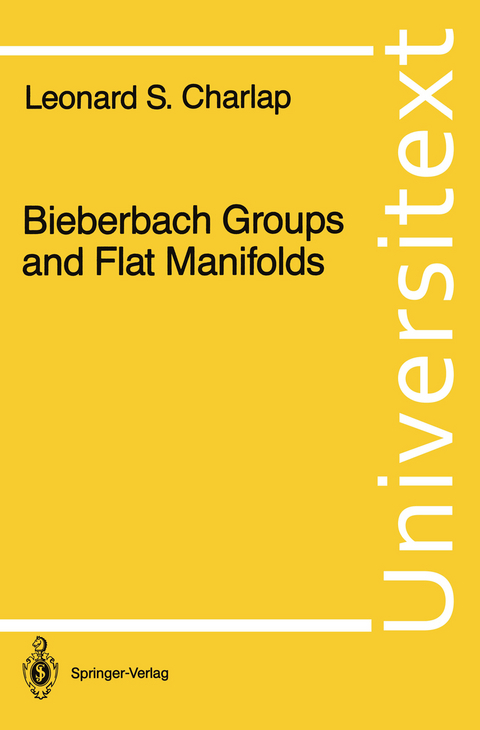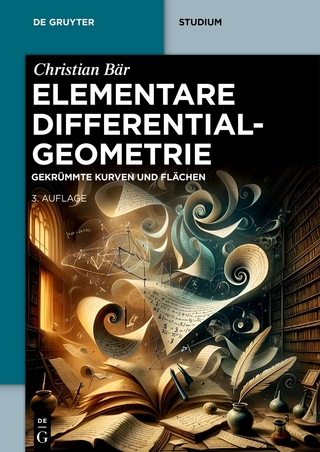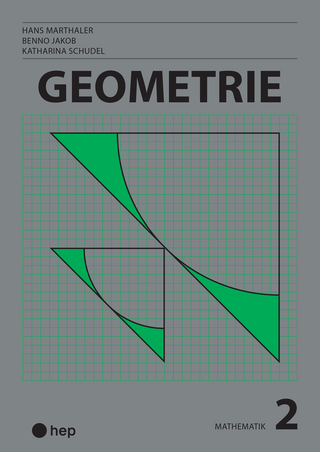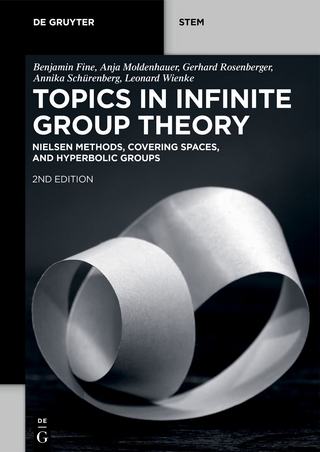
Bieberbach Groups and Flat Manifolds
Springer-Verlag New York Inc.
978-0-387-96395-2 (ISBN)
Many mathematics books suffer from schizophrenia, and this is yet another. On the one hand it tries to be a reference for the basic results on flat riemannian manifolds. On the other hand it attempts to be a textbook which can be used for a second year graduate course. My aim was to keep the second personality dominant, but the reference persona kept breaking out especially at the end of sections in the form of remarks that contain more advanced material. To satisfy this reference persona, I'll begin by telling you a little about the subject matter of the book, and then I'll talk about the textbook aspect. A flat riemannian manifold is a space in which you can talk about geometry (e. g. distance, angle, curvature, "straight lines," etc. ) and, in addition, the geometry is locally the one we all know and love, namely euclidean geometry. This means that near any point of this space one can introduce coordinates so that with respect to these coordinates, the rules of euclidean geometry hold. These coordinates are not valid in the entire space, so you can't conclude the space is euclidean space itself. In this book we are mainly concerned with compact flat riemannian manifolds, and unless we say otherwise, we use the term "flat manifold" to mean "compact flat riemannian manifold. " It turns out that the most important invariant for flat manifolds is the fundamental group.
I. Bierberbach’s Three Theorems.- 1. Rigid Motions.- 2. Examples.- 3. Bierberbach’s First Theorem.- 4. Bierberbach’s Second Theorem.- 5. Digression — Group Extensions.- 6. Digression — Integral Repesentations of Finite Groups.- 7. Bieberbach’s Third Theorem and Some Remarks.- II. Flat Riemannian Manifolds.- 1. Introduction.- 2. A Tiny Bit of Differential Topology.- 3. Connections and Curvature.- 4. Riemannian Structures.- 5. Flat Manifolds.- 6. Conjectures and Counterexamples.- III. Classification Theorems.- 1. The Algebraic Structure of Bieberbach Groups.- 2. A General Classification Scheme for Bieberbach Groups.- 3. Digression — Cohomology of Groups.- 4. Examples.- 5. Holonomy Groups.- IV. Holonomy Groups of Prime Order.- 1. Introduction.- 2. Digression — Some Algebraic Number Theory.- 3. Modules over the Cyclotomic Ring.- 4. Modules over Groups of Prime Order.- 5. The Cohomology of Modules over Groups of Prime Order.- 6. The Classification Theorem.- 7. ?p-manifolds.- 8. An Interesting Example.- 9. The Riemannian Structure of Some ?p manifolds.- V. Automorphisms.- 1. The Basic Diagram.- 2. The Hochschild-Serre Exact Sequence.- 3. 9-Diagrams.- 4. Automorphisms of Group Extensions.- 5. Automorphisms of Bieberbach Groups.- 6. Automorphisms of Flat Manifolds.- 7. Automorphisms of ?p-manifolds.
| Erscheint lt. Verlag | 10.10.1986 |
|---|---|
| Reihe/Serie | Universitext |
| Zusatzinfo | XIII, 242 p. |
| Verlagsort | New York, NY |
| Sprache | englisch |
| Maße | 155 x 235 mm |
| Themenwelt | Mathematik / Informatik ► Mathematik ► Geometrie / Topologie |
| ISBN-10 | 0-387-96395-2 / 0387963952 |
| ISBN-13 | 978-0-387-96395-2 / 9780387963952 |
| Zustand | Neuware |
| Haben Sie eine Frage zum Produkt? |
aus dem Bereich


